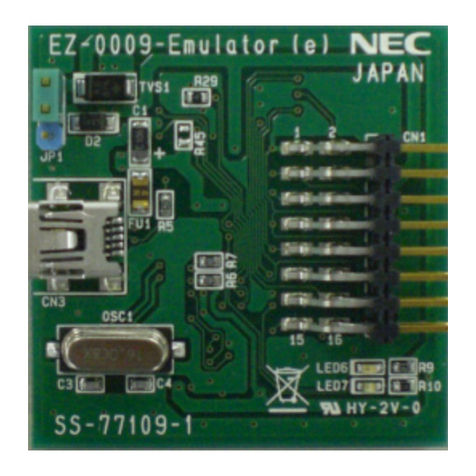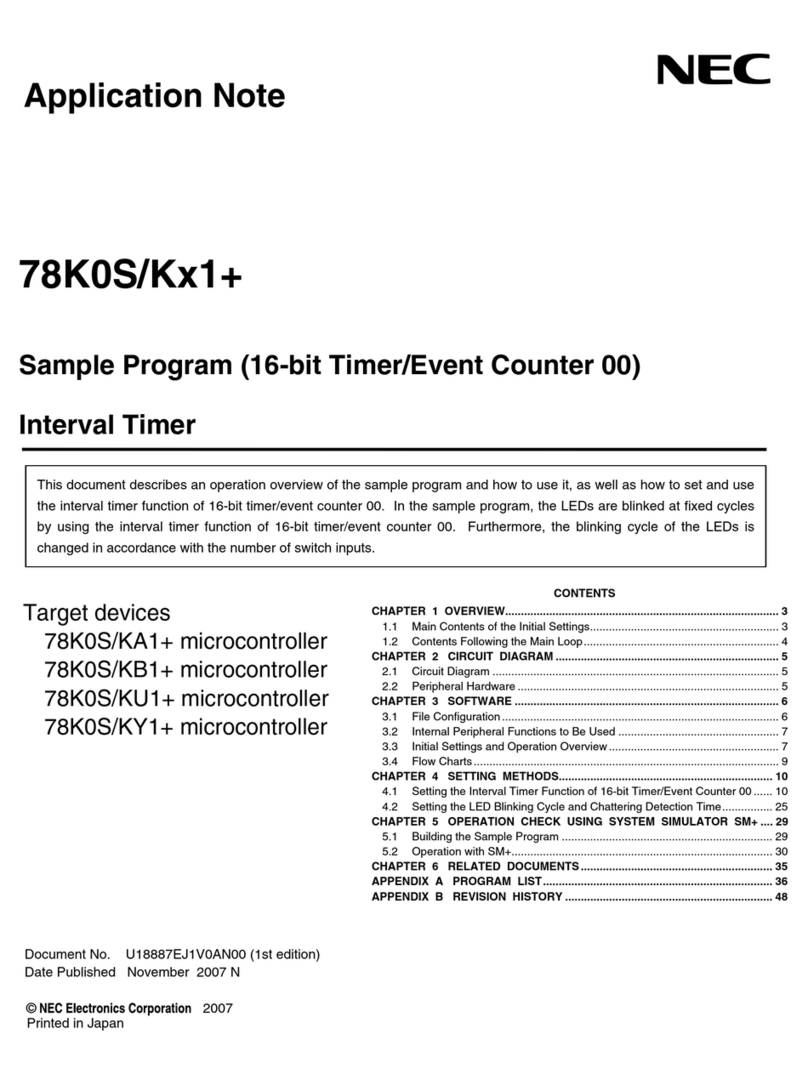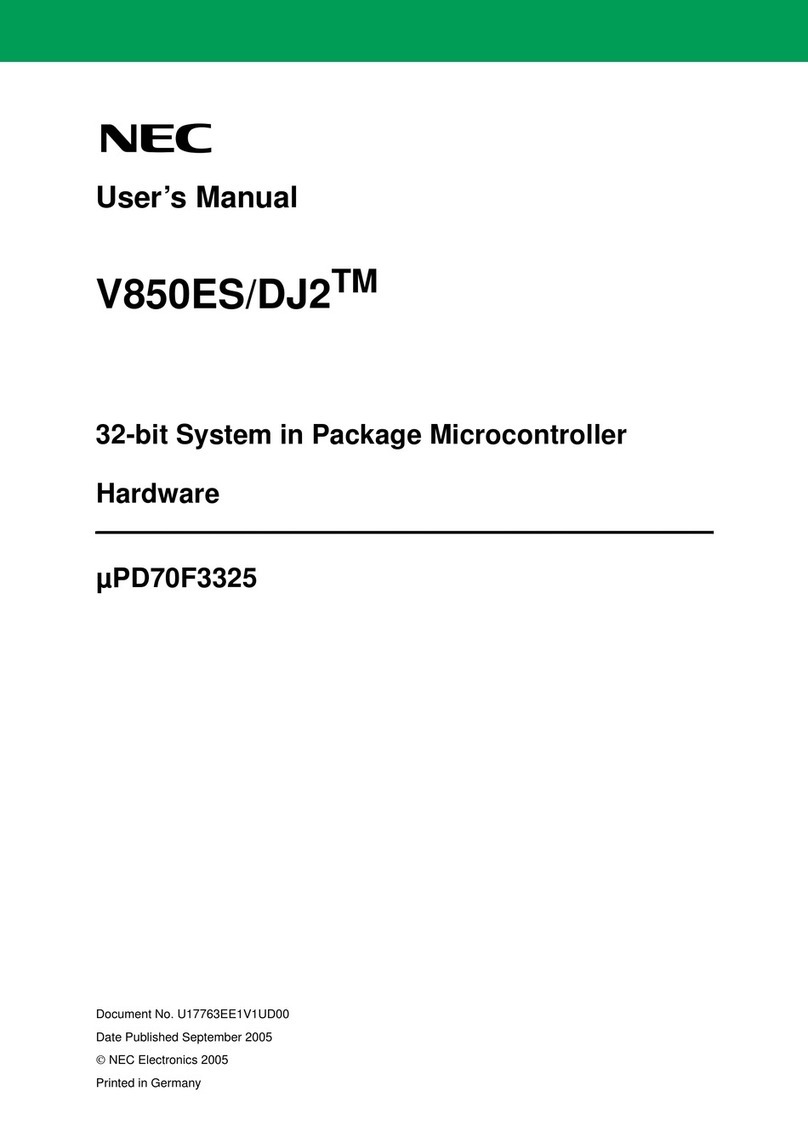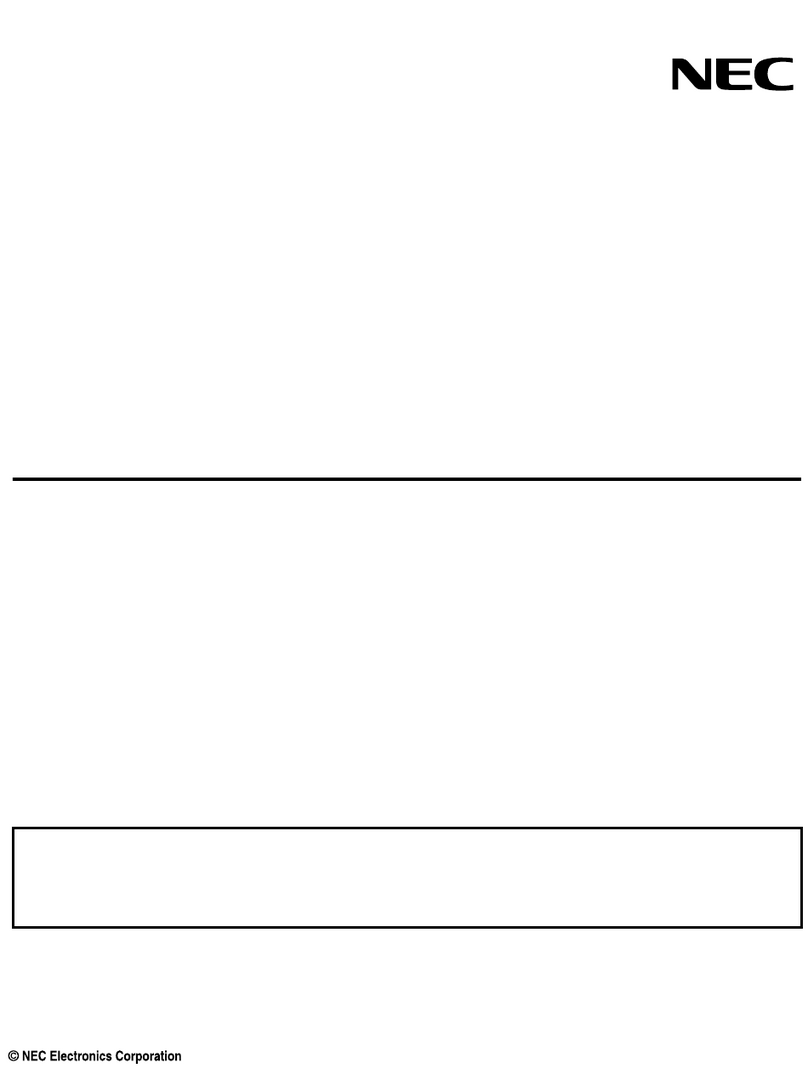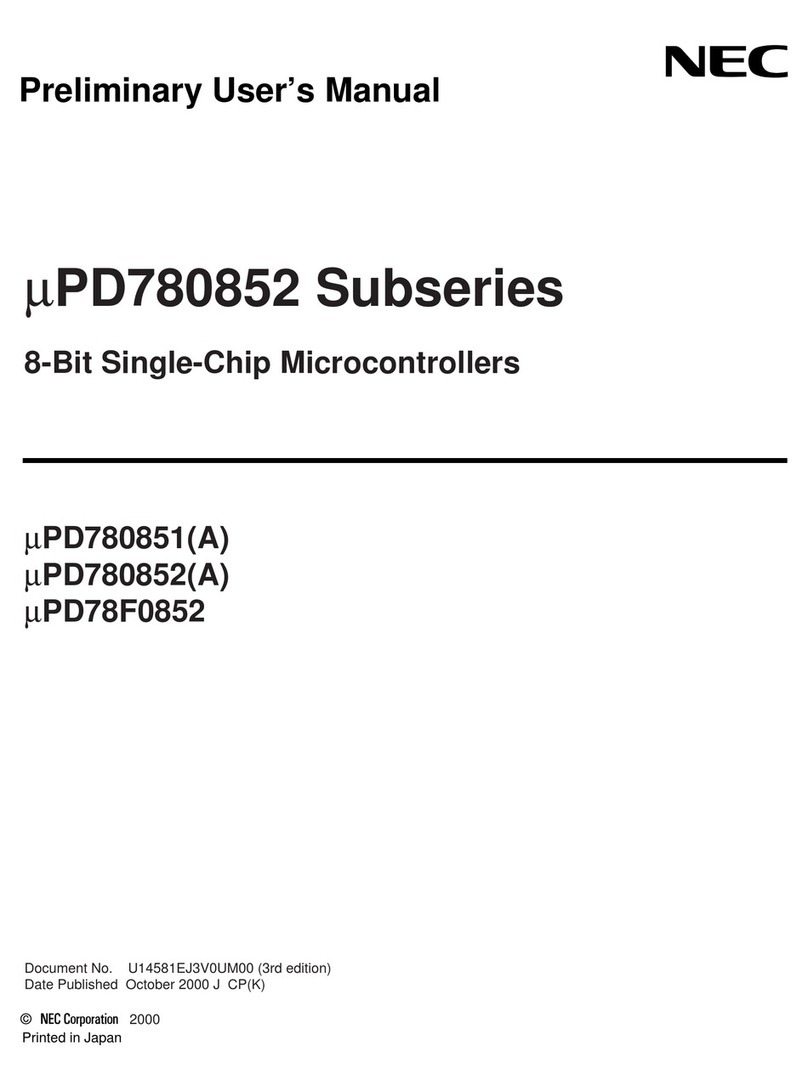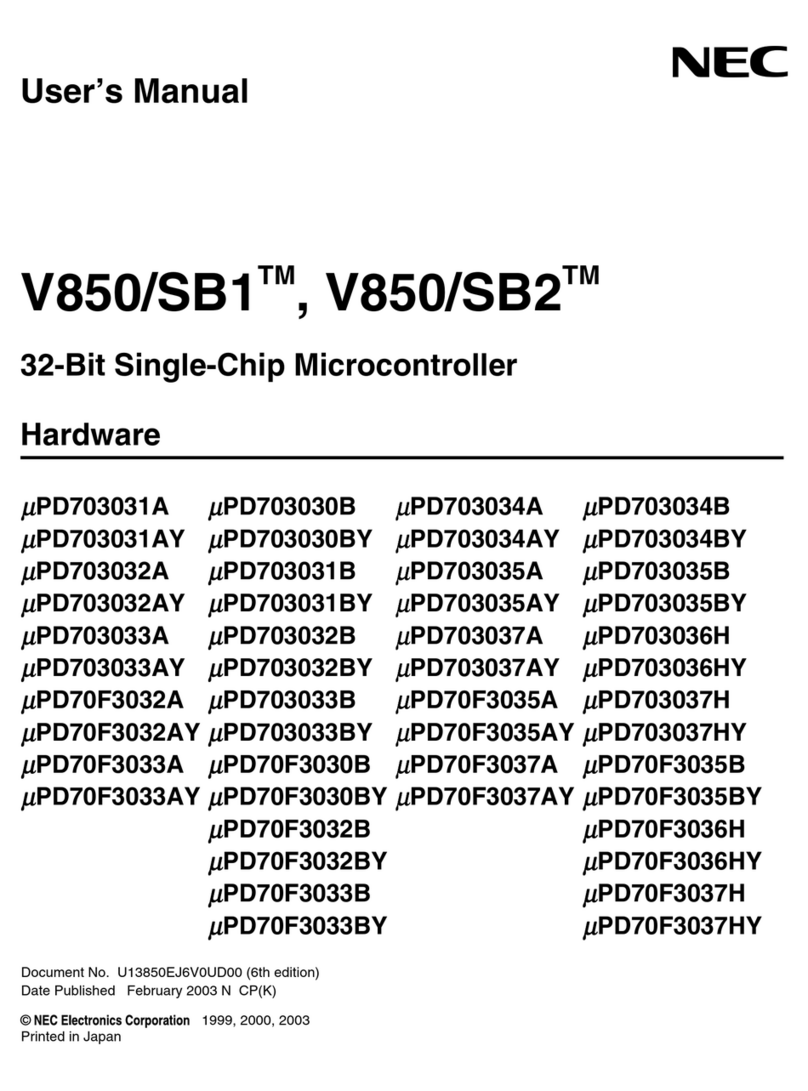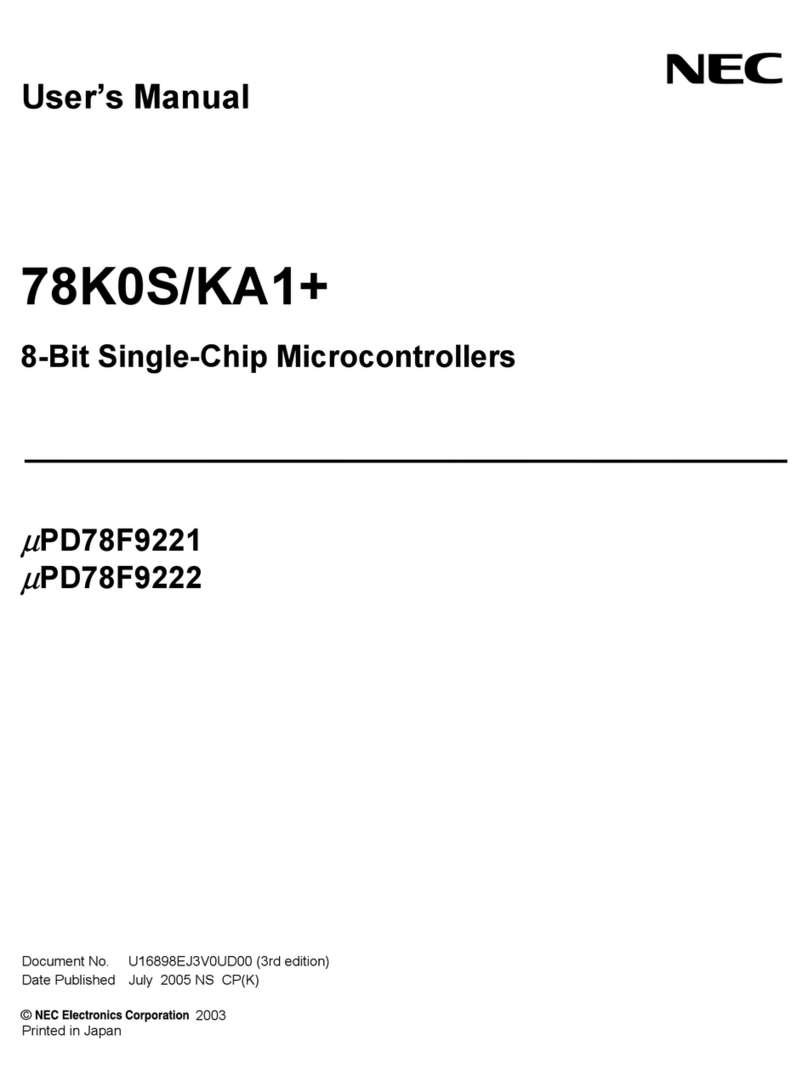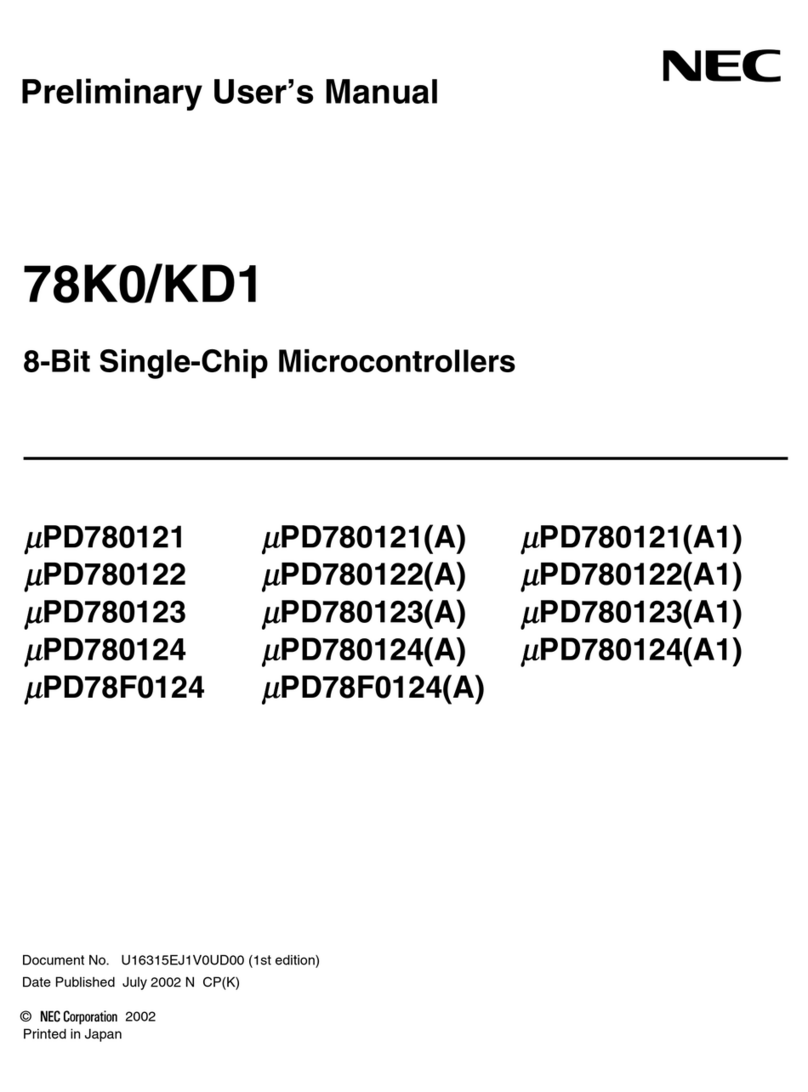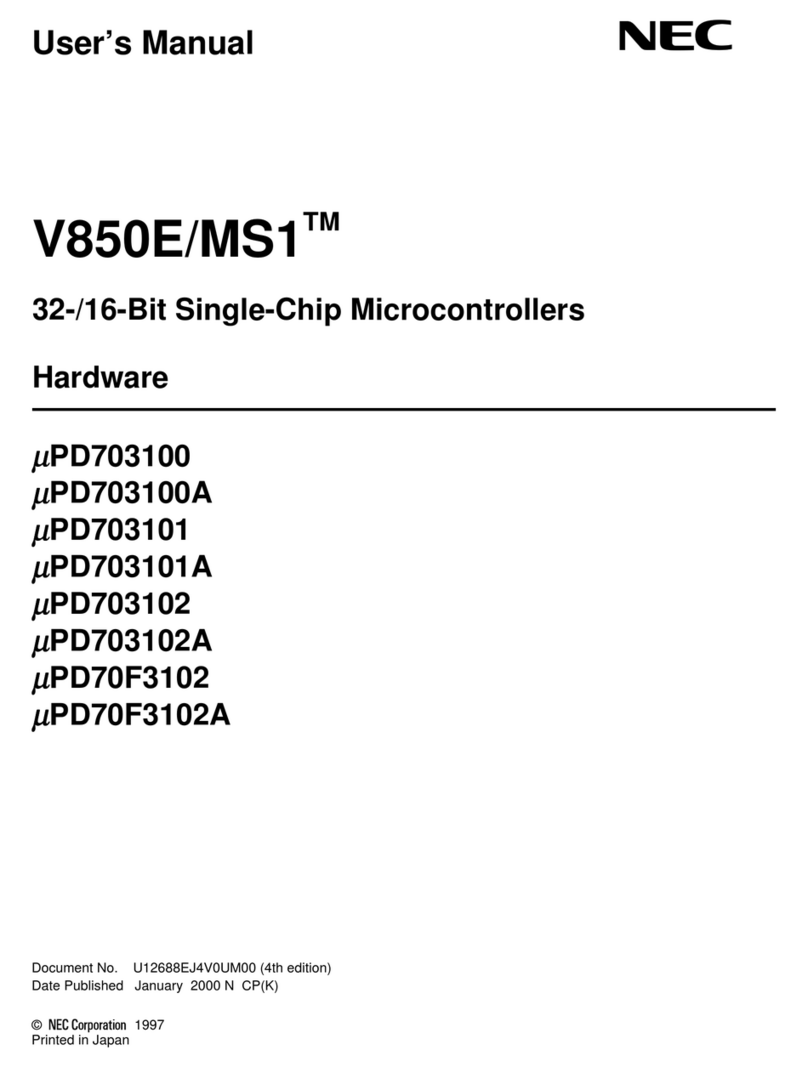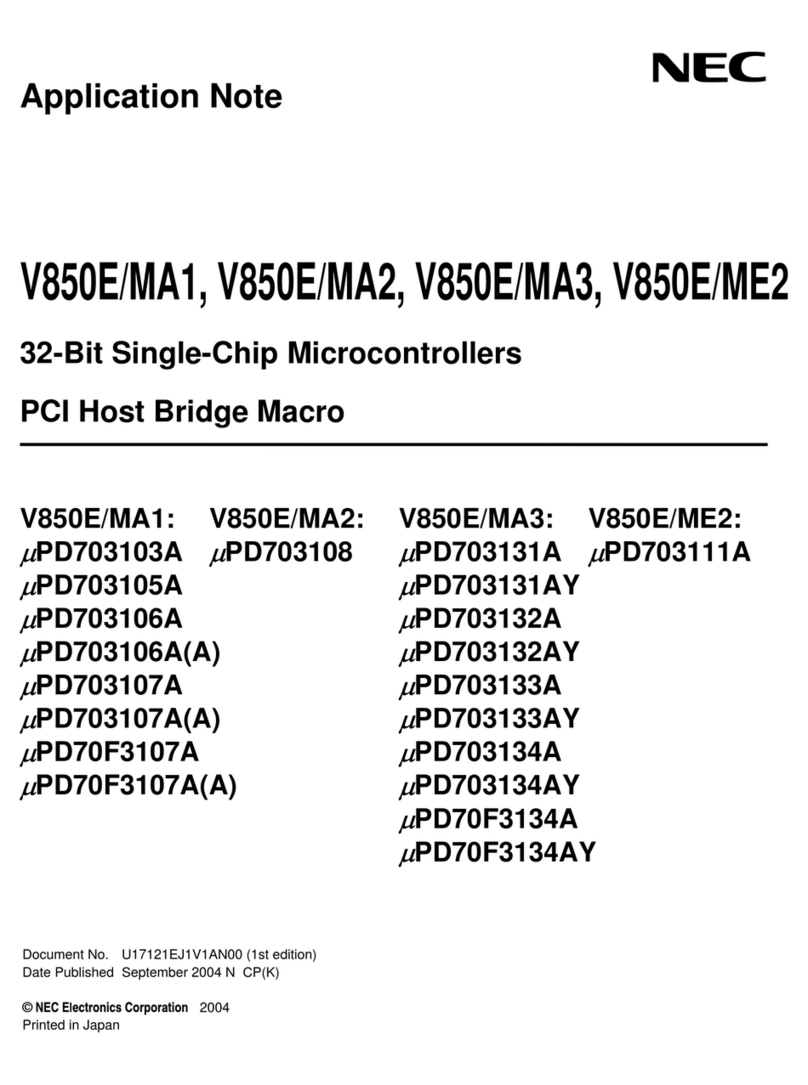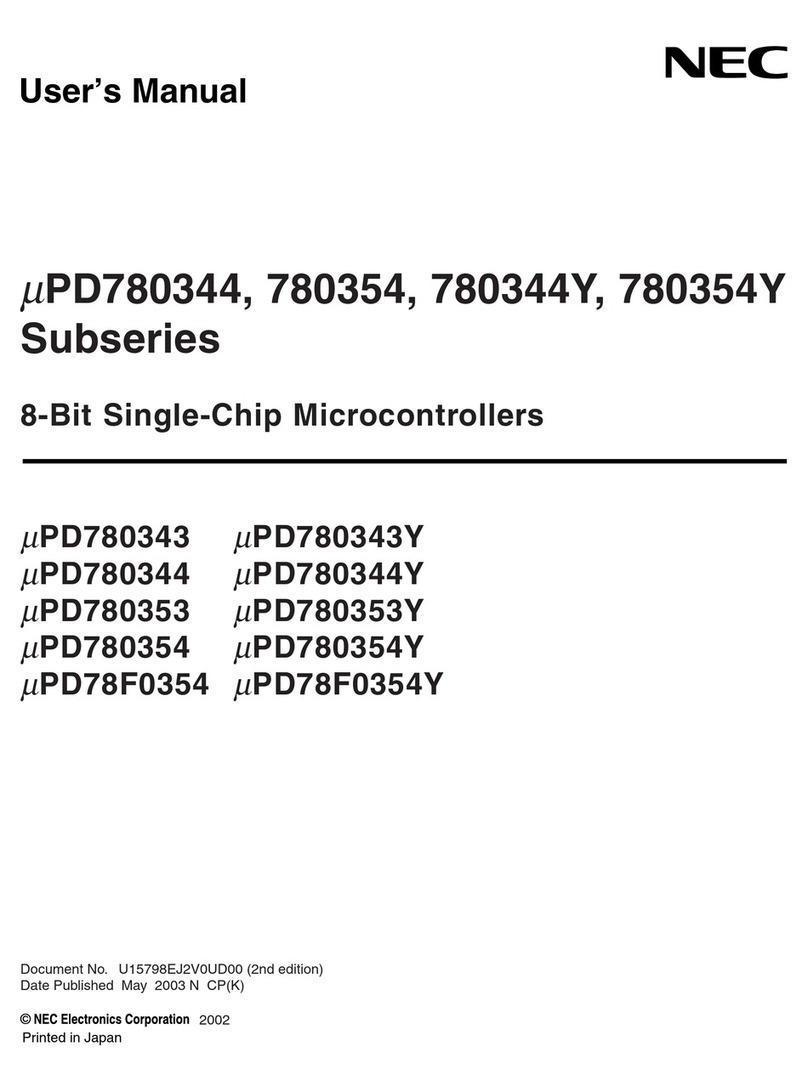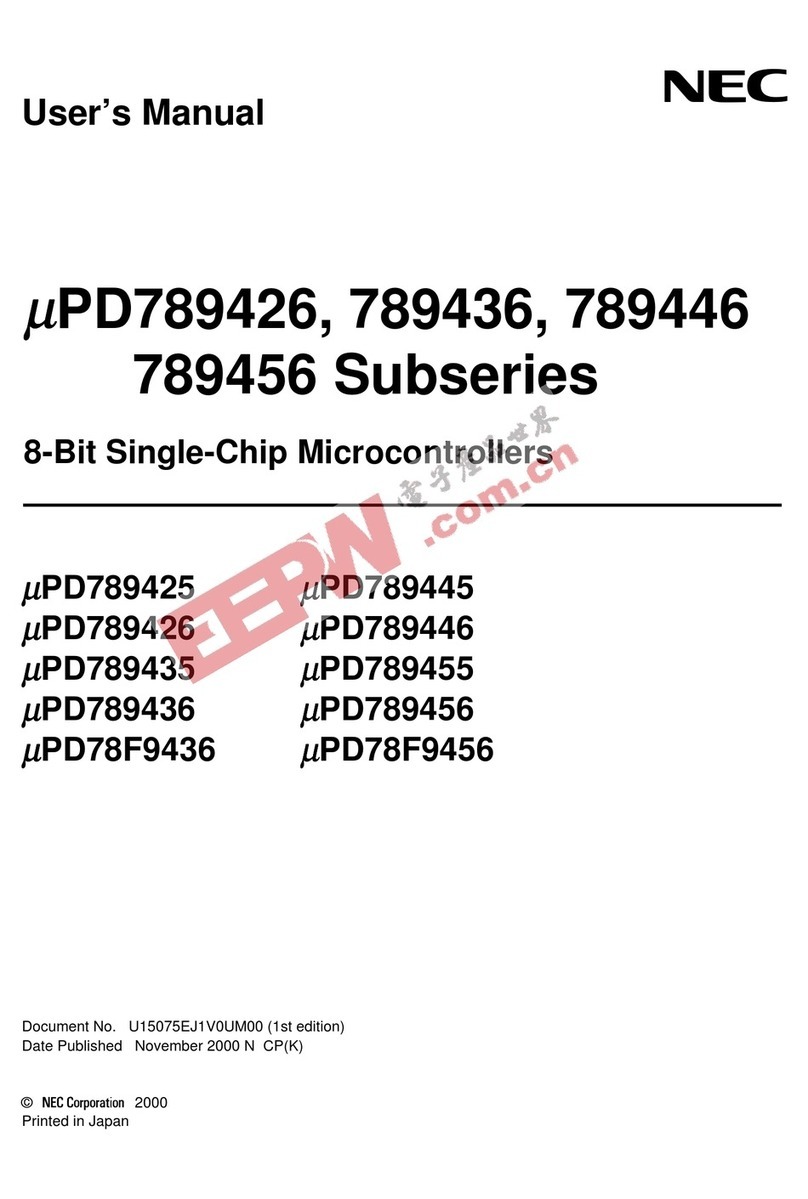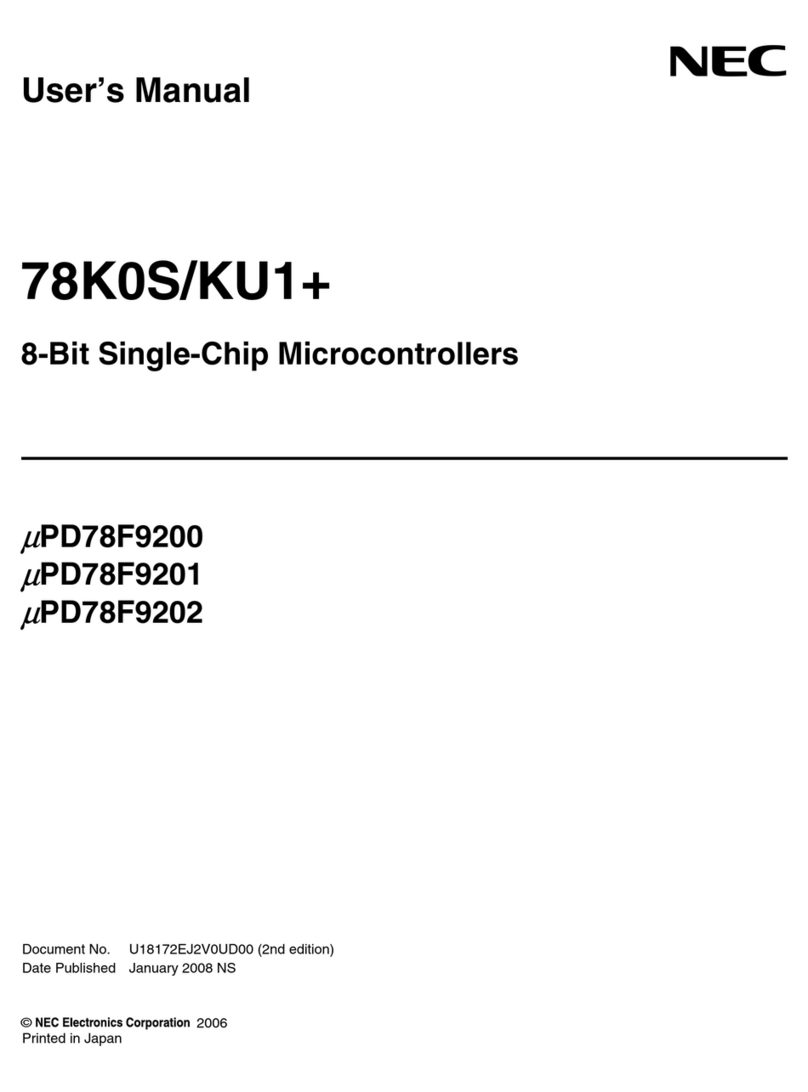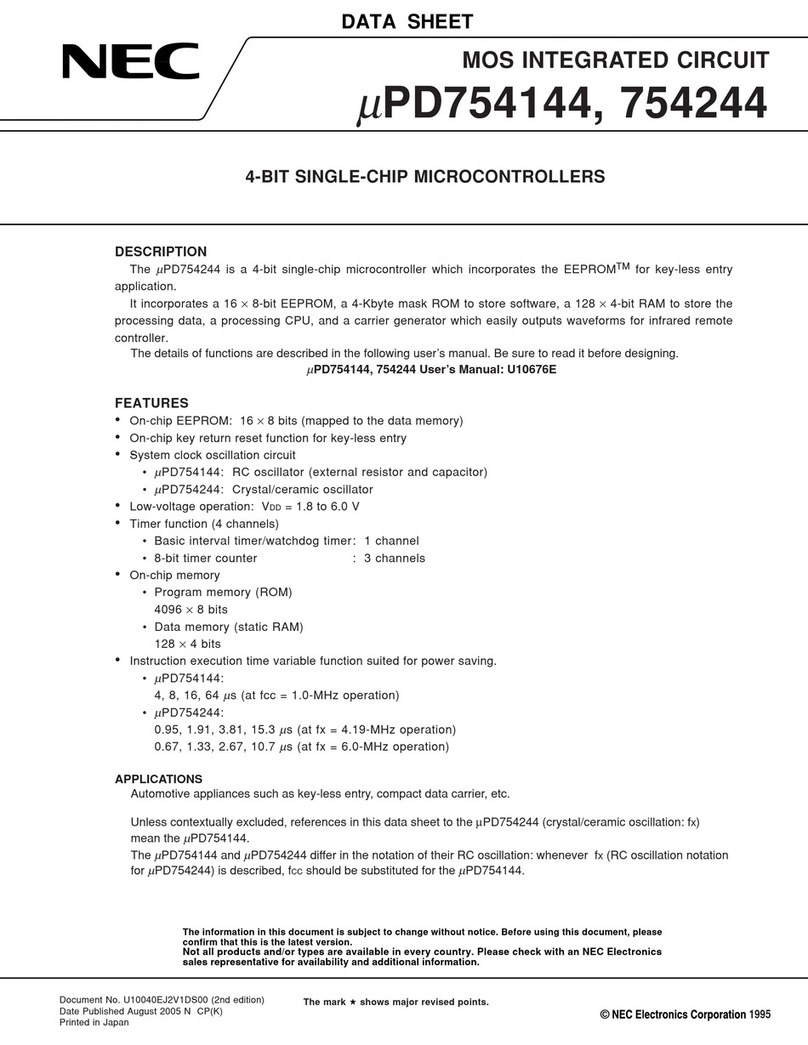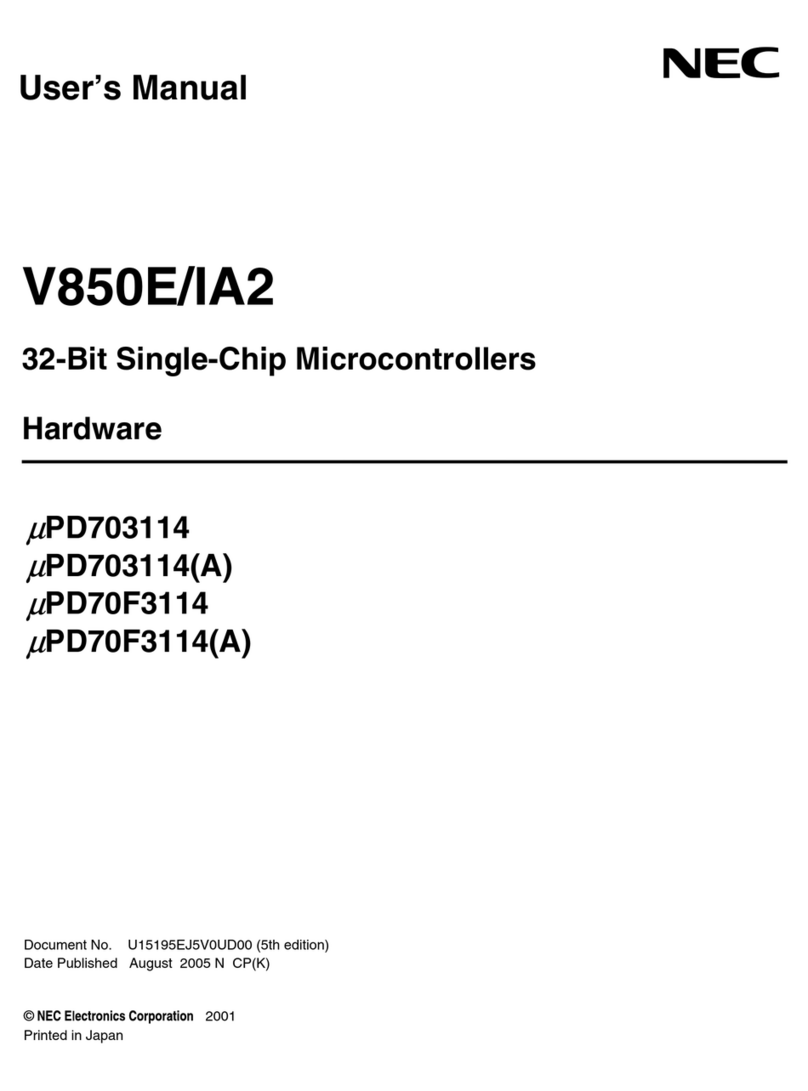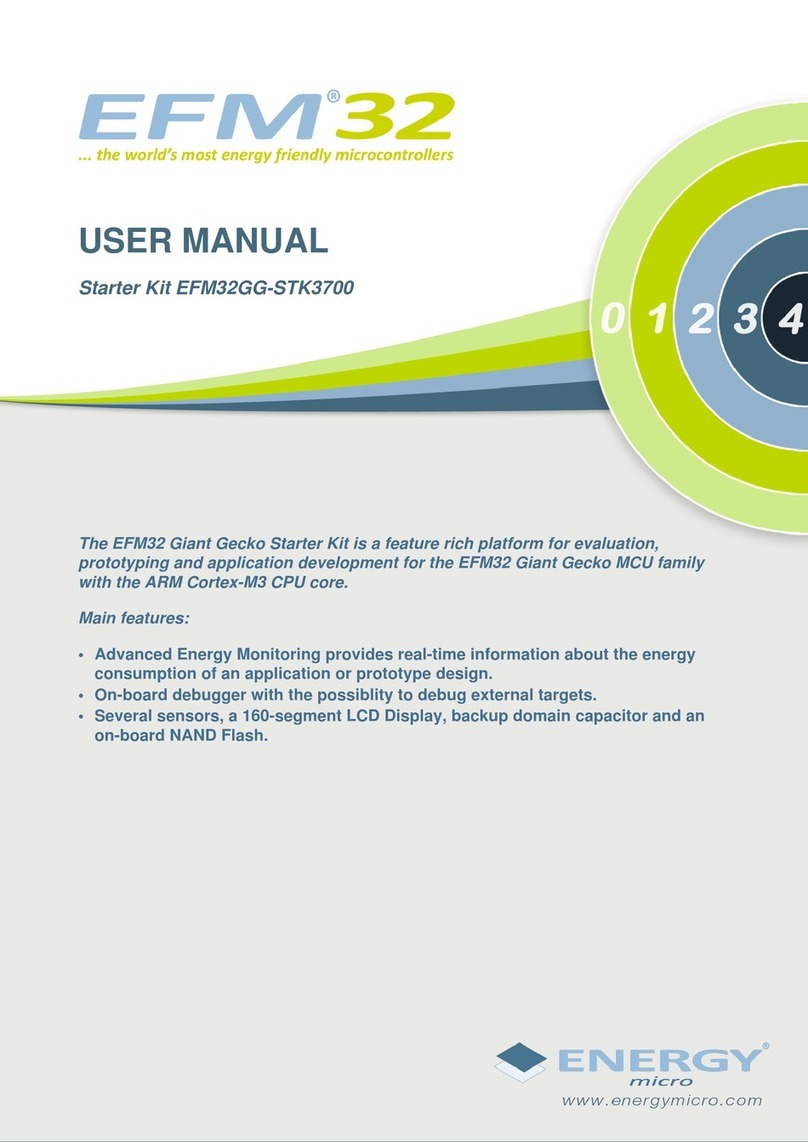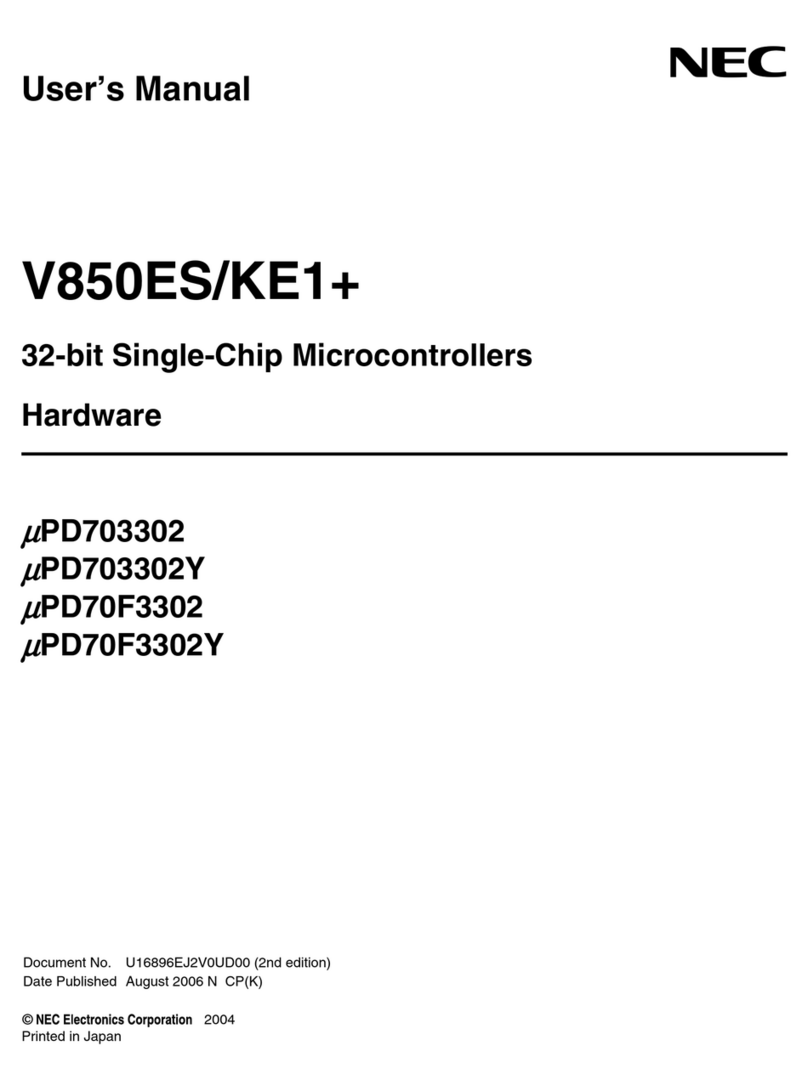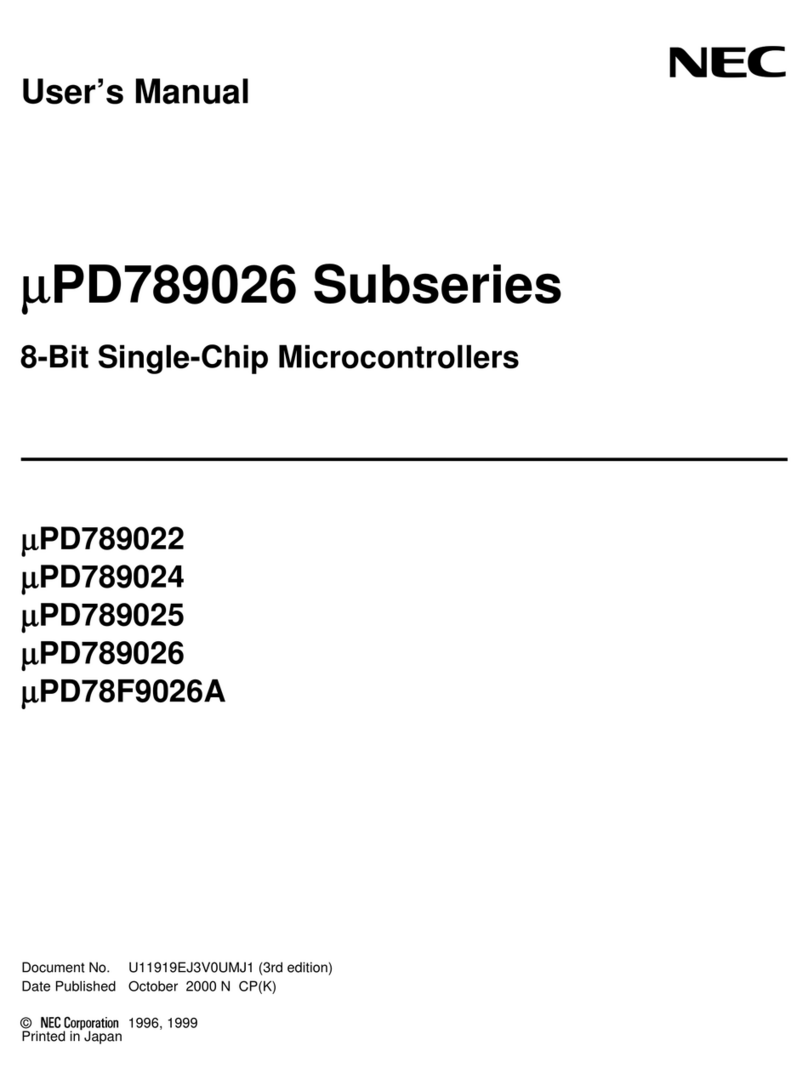
5
Caution Purchase of NEC I2C components conveys a license under the Philips I2C Patent Rights to use
these components in an I2C system, provided that the system conforms to the I2C Standard
Specification as defined by Philips.
The information in this document is subject to change without notice.
Nopart of this documentmaybecopiedorreproduced in any formorbyanymeans without the priorwritten
consentof NEC Corporation. NECCorporationassumesno responsibility foranyerrorswhich may appear
in this document.
NEC Corporation does not assume any liability for infringement of patents, copyrights or other intellectual
propertyrightsofthirdpartiesbyorarisingfromuseofadevicedescribedhereinoranyotherliabilityarising
from use of such device. No license, either express, implied or otherwise, is granted under any patents,
copyrights or other intellectual property rights of NEC Corporation or others.
While NEC Corporation has been making continuous effort to enhance the reliability of its semiconductor
devices, the possibility of defects cannot be eliminated entirely. To minimize risks of damage or injury to
persons or property arising from a defect in an NEC semiconductor device, customers must incorporate
sufficient safety measures in its design, such as redundancy, fire-containment, and anti-failure features.
NEC devices are classified into the following three quality grades:
“Standard”, “Special”, and “Specific”. The Specific quality grade applies only to devices developed based
on a customer designated “quality assurance program” for a specific application. The recommended
applicationsofa device depend on its quality grade, asindicatedbelow. Customersmustcheckthequality
grade of each device before using it in a particular application.
Standard: Computers,officeequipment,communicationsequipment,testandmeasurementequipment,
audio and visual equipment, home electronic appliances, machine tools, personal electronic
equipment and industrial robots
Special: Transportation equipment (automobiles, trains, ships, etc.), traffic control systems, anti-
disastersystems,anti-crimesystems,safetyequipmentandmedicalequipment(notspecifically
designed for life support)
Specific: Aircrafts,aerospace equipment, submersiblerepeaters,nuclearreactor control systems,life
support systems or medical equipment for life support, etc.
The quality grade of NEC devices is “Standard” unless otherwise specified in NEC’s Data Sheets or Data
Books.
If customers intend to use NEC devices for applications other than those specified for Standard quality
grade, they should contact an NEC sales representative in advance.
Anti-radioactive design is not implemented in this product.
M7 96.5
The application circuits and their parameters are for reference only and are not intended for use in actual design-ins.

